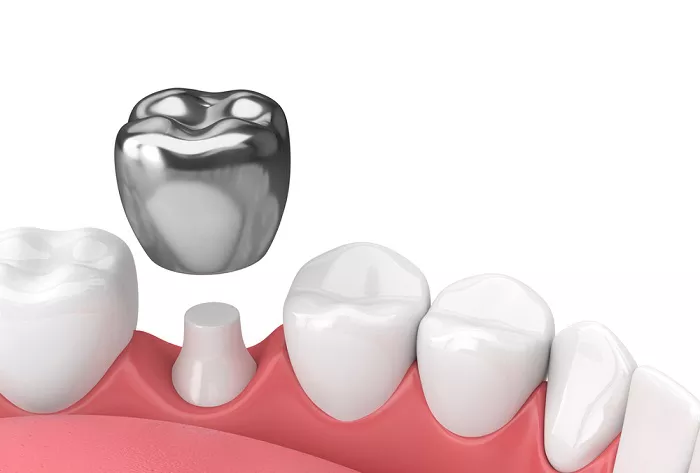Pediatric dentistry focuses on the unique oral health needs of children. One of the commonly used restorative options in this field is the stainless steel crown. Stainless steel crowns have been a staple in pediatric dentistry for decades and offer several distinct advantages. Understanding why they are utilized is crucial for both dental professionals and parents alike.
Durability and Strength
Stainless steel crowns are highly durable. They are able to withstand the significant forces exerted during chewing and biting, especially in the case of posterior teeth.
Resistance to Wear:
Children are often less careful with their teeth compared to adults. They may chew on hard objects or have a diet that includes crunchy and tough foods. A stainless steel crown can endure such wear and tear much better than other restorative materials like composite fillings. For example, a child who loves to eat hard candies or nuts will not easily damage a stainless steel crown, ensuring the longevity of the restoration.
Protection of Tooth Structure:
In cases where a tooth has extensive decay or has undergone a pulpotomy or pulpectomy, a stainless steel crown provides a strong and stable covering. It helps to protect the remaining tooth structure from further damage or fracture. This is particularly important in primary teeth as they serve as placeholders for the developing permanent teeth. If a primary tooth is weakened and breaks down further, it can lead to issues with the eruption and alignment of the permanent tooth.
Ease of Placement
The process of placing a stainless steel crown is relatively straightforward.
Minimal Tooth Preparation:
Compared to some other restorations, stainless steel crowns require less removal of healthy tooth tissue. Dentists only need to shape the tooth slightly to ensure a proper fit of the crown. This is beneficial as it preserves more of the natural tooth structure, which is important for the overall health and development of the tooth. For instance, in a tooth with a large cavity, rather than removing a significant amount of tooth to place a large filling, a stainless steel crown can be fitted with minimal alteration to the tooth.
Time-Efficient:
The placement of a stainless steel crown can usually be completed in a single dental visit. This is convenient for both the child and the parents. It reduces the need for multiple appointments and the associated stress and inconvenience. For a busy family, having a restoration completed in one go means less disruption to the child’s school and other activities.
Cost-Effectiveness
Stainless steel crowns are a cost-effective solution in pediatric dentistry.
Affordable Option:
They are generally less expensive than some of the more aesthetically pleasing but costly alternatives such as porcelain or zirconia crowns. This makes them a viable choice for many families, especially those without extensive dental insurance coverage. For example, in a case where multiple teeth need to be restored in a child, the cost of using stainless steel crowns can be significantly lower, allowing for comprehensive treatment without a large financial burden.
Long-Term Value:
Given their durability, stainless steel crowns provide good long-term value. They are less likely to require replacement or repair in the short term compared to some other restorations. This means that over time, the overall cost of maintaining the child’s oral health with stainless steel crowns can be lower than if other, more fragile materials were used.
Aesthetics and Acceptance
While stainless steel crowns are not as aesthetically pleasing as tooth-colored restorations, they still have some advantages in terms of acceptance.
Temporary Nature:
In the case of primary teeth, the stainless steel crown is a temporary solution. Parents and children understand that it is only in place until the primary tooth is naturally lost. The focus is more on maintaining the function and integrity of the tooth rather than achieving a perfect aesthetic result. For example, a child with a stainless steel crown on a front primary tooth may have a slightly different appearance, but it is a short-term situation and does not have a major impact on the child’s overall smile in the long run.
Adaptability:
Children are often surprisingly adaptable to the appearance of stainless steel crowns. They may even see it as a unique feature or a “superhero tooth” of sorts. Dentists and parents can use positive reinforcement and explanation to help the child feel comfortable with the crown. In addition, as the child grows and becomes more self-conscious about appearance, the primary teeth with stainless steel crowns will start to exfoliate and be replaced by permanent teeth.
Conclusion
Stainless steel crowns play a vital role in pediatric dentistry. Their durability and strength protect the teeth of children, especially those that have undergone significant decay or treatment. The ease of placement and cost-effectiveness make them a practical choice for many families and dental practices. While they may not have the same aesthetic appeal as some other options, their temporary nature and the adaptability of children make them a well-tolerated solution. Dental professionals should consider stainless steel crowns as an important tool in their arsenal for treating the oral health needs of children. Parents, on the other hand, should understand the benefits of stainless steel crowns and be assured that they are a reliable and effective way to ensure the proper development and health of their child’s teeth during the primary dentition stage.

